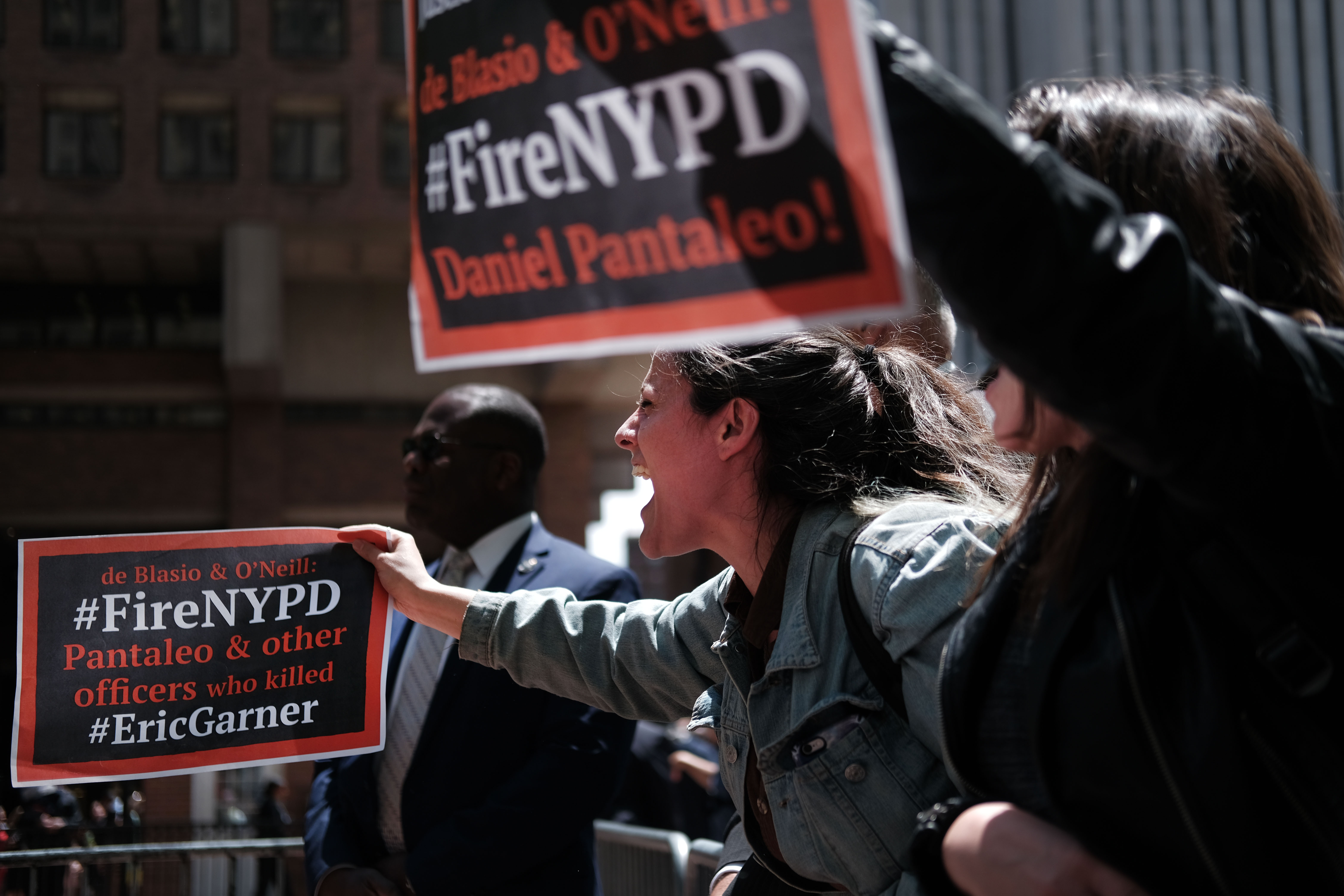StringerBell
OG
https://www.nytimes.com/2019/05/12/nyregion/eric-garner-death-daniel-pantaleo-chokehold.html
‘I Can’t Breathe’: 5 Years After Eric Garner’s Death, an Officer Faces Trial
The last words Eric Garner, an unarmed black man, uttered on a New York City sidewalk in 2014 instantly became a national rallying cry against police brutality. “I can’t breathe,’’ Mr. Garner pleaded 11 times after a police officer in plain clothes placed his arm across his neck and pulled him to the ground while other officers handcuffed him.
The encounter was captured on a video that ricocheted around the world, set off protests and prompted calls for the officers to be fired and criminally charged.
Mr. Garner’s death was part of a succession of police killings across the country that became part of a wrenching conversation about how officers treat people in predominantly poor and minority communities.
Now, the officer who wrapped his arm around Mr. Garner’s neck, Daniel Pantaleo, 33, faces a public trial that could lead to his firing. Officer Pantaleo has denied wrongdoing and his lawyer argues that he did not apply a chokehold.
The trial, scheduled to start Monday at Police Department headquarters, has been long-awaited by the Garner family, whose campaign to hold the police accountable for what they say is an unjustified use of force took on greater significance after Mr. Garner’s daughter, Erica Garner, died in 2017.
The city paid $5.9 million to settle a lawsuit with the family after a grand jury declined to bring criminal charges.
But Mayor Bill de Blasio’s administration has fought and delayed the family’s efforts to have all the police officers involved in the encounter punished.
“It was at least a dozen more who just did nothing, or either they pounced on him, they choked him, they filed false reports,” Mr. Garner’s mother, Gwen Carr, said in an interview. “It’s about all of those officers who committed an injustice that day and they all need to stand accountable.”
Officer Pantaleo faces charges of reckless use of a chokehold and intentional restriction of breathing. His lawyer says that Officer Pantaleo did not use a chokehold, but a different technique that is taught to officers in training and is known as a seatbelt.
So the trial will have to settle two questions at the heart of the case: Was the maneuver Officer Pantaleo used a chokehold? And, if so, was the officer justified in using it to subdue an unarmed man during a low-level arrest?
On Thursday, the Police Department judge overseeing the trial said that prosecutors must prove that Officer Pantaleo’s actions went beyond a violation of departmental rules and constituted a crime — an unusually high bar.
Video of the fatal encounter was recorded by Ramsey Orta, a friend of Mr. Garner’s who is expected to testify at Officer Pantaleo’s trial. It captured Mr. Garner telling officers in street clothes to leave him alone after they approached him outside a beauty supply store on July 17, 2014, not far from the Staten Island Ferry Terminal.
Mr. Garner had repeated encounters with the police and believed that he was being harassed.
“This stops today,” he told the officers before they moved to arrest him over accusations that he was selling untaxed cigarettes. As one officer tried to grab Mr. Garner’s hand, he slipped free. Then Officer Pantaleo slid one arm around Mr. Garner’s neck and another under his left arm and dragged him to the ground. On the pavement, he begged for air.
The medical examiner ruled his death a homicide and said he died from a chokehold and the compression of his chest from lying prone. The findings are a crucial issue in the trial and Officer Pantaleo’s defense lawyer plans to dispute them.
Stuart London, the police union lawyer representing Officer Pantaleo, said the technique his client used was the seatbelt maneuver taught in the Police Academy, not a chokehold. He plans to argue that Mr. Garner, who was overweight and severely asthmatic, died because of poor health.
“Those who have been able to not come to a rushed judgment, but have looked at the video in explicit detail, see Pantaleo’s intent and objective was to take him down pursuant to how he was taught by NYPD, control him when they got on the ground, and then have him cuffed,” Mr. London said in an interview. “There was never any intent for him to exert pressure on his neck and choke him out the way the case has been portrayed.”
The Civilian Complaint Review Board, an independent city agency that investigates allegations of police misconduct, is prosecuting the case against Officer Pantaleo and is seeking his termination.
But the ruling on Thursday by the judge, Rosemarie Maldonado, the deputy police commissioner in charge of trials, denied Mr. London's motion to dismiss the case. But her ruling means that prosecutors need to prove that Officer Pantaleo’s actions rose to the crimes of assault and strangulation in order to avoid the state's prohibition on bringing misconduct charges more than 18 months after occurrence.
Colleen Roache, a spokeswoman for the review board, said prosecutors understood their obligation when they served Officer Pantaleo with the charges last July.
But critics have said the review board's failure to file charges sooner had made the prosecutors' case significantly harder to prove.
The Police Department banned chokeholds in 1993 amid concern about a rising number of civilian deaths in police custody. In 2016, the department added an exception to its chokehold ban under certain circumstances, which critics said made it easier for officers to justify its use.
After Mr. Garner’s death, the Police Department spent $35 million to retrain officers not to use chokeholds, but they continue to use the maneuver and rarely face punishment.

